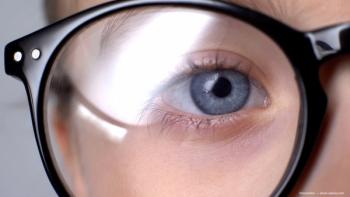
Dry eye in patients undergoing LASIK requires proactive approach when detecting, managing
Recognizing and treating dry eye disease before LASIK is an important strategy for mitigating patient unhappiness after surgery.
Key Points
Atlanta-Recognizing and treating dry eye disease before LASIK is an important strategy for mitigating patient unhappiness after surgery, said Steven E. Wilson, MD, during refractive surgery subspecialty day at the American Academy of Ophthalmology annual meeting.
"Not only are patients with existing dry eye at higher risk of developing a more severe condition after LASIK, but if the corneal surface is not optimized prior to surgery, the wavefront analysis can be confounded, leading to correction errors in a customized procedure," he continued.
"Remember, it can take longer for some patients to respond to cyclosporine," Dr. Wilson said. "In the phase III clinical trial, it took 3 months or longer for up to 40% of patients to achieve improvement in dry eye signs and symptoms.
"The addition of punctal plugs and alpha omega fatty acid dietary supplements may be beneficial," he added.
Initiating topical cyclosporine therapy may have an additional benefit for those patients, considering evidence that this treatment may halt the progression of dry eye disease, he said.
"This effect of cyclosporine has yet to be proven in a large, multicenter trial, but there are some published papers suggesting that at least a subgroup of patients can achieve long-term resolution of dry eye, even after topical cyclosporine is discontinued," Dr. Wilson said. "For this reason, we are doing patients a service to detect dry eye early in its course and treat them."
If significant findings of dry eye persist after 6 to 8 months of cyclosporine treatment, the patient is not considered a candidate for LASIK, he added.
Surface ablation may be contemplated, but it also can be risky, Dr. Wilson said.
Post-LASIK care
When LASIK is performed, cyclosporine is continued for at least 6 months after surgery, allowing time for nerve regeneration into the flap.
The combination of topical cyclosporine with nonpreserved artificial tears also is used to treat LASIK-induced neurotrophic epitheliopathy (LINE), a condition that can occur as an exacerbation of pre-existing dry eye or develop in patients who do not have signs or symptoms of dry eye prior to LASIK. LINE is characterized by dryness, grittiness, irritation, and punctate epithelial keratopathy often confined to the flap. The results of Schirmer's test are normal in these patients.
"Fluctuating vision is probably the most troubling problem for these patients, who just paid a lot of money for a procedure to improve their vision," Dr. Wilson said.
He noted that more than 85% of patients with LINE have responses to topical cyclosporine treatment within 1 month.
"Presumably, these individuals have an occult inflammatory dry eye condition that manifests itself clinically as a result of the added stress of cutting the corneal nerves and then responds to topical immunomodulatory treatment," Dr. Wilson said. "However, cyclosporine may also promote corneal nerve regeneration."
In patients whose conditions are not responding, lubricant ointments and punctal plugs may be added to their care, along with a bandage contact lens to manage fluctuating vision if the tear production is normal (Schirmer's test > 8 mm in 5 minutes).
"Even if LINE does not respond to topical cyclosporine, it usually spontaneously improves within 6 to 8 months," Dr. Wilson said.
The incidence of LINE, he added, appears to be lower when flap creation is performed with a femtosecond laser than if a mechanical microkeratome is used. In a study in which Dr. Wilson and colleagues compared eyes with a flap created using the 60-kHz femtosecond laser (IntraLase, Advanced Medical Optics) versus a mechanical microkeratome (Hansatome, Bausch & Lomb), the rates of post-LASIK dry eye were 8% and 46%, respectively.
"Although there was a difference in flap thickness between the two groups, that does not appear to be the explanation for the difference in occurrence, because the incidence of dry eye was similar in subgroups of eyes with thick and thin flaps created with the mechanical microkeratome," he said. "We are speculating that limbal cell damage may be a factor, although the full story remains to be elucidated."
Newsletter
Don’t miss out—get Ophthalmology Times updates on the latest clinical advancements and expert interviews, straight to your inbox.



















































.png)


